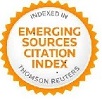Edition and translation of János Zsámboky’s Speech Oratores ante poetas esse a pueris cognoscendos (1552)
DOI:
https://doi.org/10.17398/Keywords:
János Zsámboky, Johannes Sambucus, Rhetoric, Oratory, poetry, school, school speechAbstract
Edition and translation of the speech Oratores ante poetas esse a pueris cognoscendos, pronounced by the Hungarian humanist Johannes Sambucus (János Zsámboky, 1531-1584) at Sorbonne University in Paris (September 1551) and published one year later in Basel, as appendix to his Δηµηγορίαι, hoc est, conciones aliquot ex libris Xenophontis of Paedia Cyri, an anthology of speeches drawn from the Cyropedia that was aimed at students of Greek language in general and Oratory in particular. The edition and translation of the Latin text is preceded by a small introduction in which a brief sketch of the author and his work is specified, as well as the fundamental features of the speech under analysis.
Downloads
References
ALONSO GUARDO, A (2008), “Emblemática y Medicina. Descripción y comentario del Emblema de Juan Sambuco titulado Partes hominis”, Humanistica Lovaniensia. Journal of Neo-Latin Studies 57: 167-184.
ALMÁSI, G. (2009), The Uses of Humanism: Johannes Sambucus (1531-1584), Andreas Dudith (1533-1589) and the Republic of Letters in East Central Europe, Leiden-Boston: Brill.
ALMÁSI, G. et alii (eds.) (2014), A Divided Hungary in Europe: Exchanges, Networks and Representations, 1541-1699. Volume 1. Study Tours and Intellectual-Religious Relationships, Newcastle upon Tyne: Cambridge Scholars Publishing.
ALMÁSI, G. & KISS, F. G. (2014), Humanistes du bassin des Carpates, vol. 2: Johannes Sambucus [Europa Humanistica, vol. 14], Turnhout: Brepols.
BAKEWELL, S. (1994), A bibliography of Joannes Sambucus (1531–1584), Submitted in part requirement for the degree of M.A. of University College, London, Dept. of Library, Archive and Information Studies, September 1994.
GASTGEBER, Ch. & KLECKER, E. (eds.) (2017), Iohannes Sambucus / János Zsámboki / Ján Sambucus (1531-1584): Philologe, Sammler und Historiograph am Habsburgerhof, Wien: Praesens Verlag.
GERSTINGER, H. (ed.) (1965), From the diary of the imperial court historian Johannes Sambucus (1531–1584): Cod Vind Latin 9039, fol (Proceedings of the Austrian Academy of Sciences of Humanities Class, Volume 248, 2 Dep.). Vienna: Böhlau.
GERSTINGER. H. (1968), Die Briefe des Johannes Sambucus (Zsamboky) 1554-1584. Mit einem Anhang: die Zambucusbriefe im Kreisarchiv von Trnava von Anton Vantuck, us (Zsamboky) 1554-1584, Wien: Böhlau.
IGLESIAS-ZOIDO, J. C. & PINEDA, V. (eds.) (2017), Anthologies of Historiographical Speeches from Antiquity to Early Modern Times. Rearranging the Tesserae, Leiden- Boston: Brill.
LÓPEZ-PELÁEZ CASELLAS, Mª P. (2006), “Dos extrañas representaciones del músico Orfeo en la emblemática renacentista y barroca”, Laboratorio de Arte 19: 131-142.
LÓPEZ-PELÁEZ CASELLAS, Mª P. (2008), Mª P. “Orfeo como símbolo de la elocuencia y la civilización. Un estudio desde la emblemática”, Cuad. Art. Gr. 39: 285-299.
MARSH, D. (1984), “Lorenzo Valla in Naples: The Translation from Xenophon's
Cyropaedia”, Bibliotheque d'humanisme et Renaissance 46: 407-420.
MARSH, D. (1992), “Xenophon”, in V. Brown, P.O. Kristeller and F.E. Cranz, eds., Catalogus translationum et commentariorum, vol. 7, Washington: The Catholic University of America Press, pp. 75-196.
MONFASANI, J. (1976), George of Trebizond: A Biography and a Study of His Rhetoric and Logic, Leiden-Boston: Brill.
TINSLEY, B. S. (1989), “Johann Sturm’s Method for Humanistic Pedagogy”, The Sixteenth Century Journal 20.1: 23-40.
VISSER, A. S. Q. (2005), Joannes Sambucus and the learned image: The Use of the Emblem in Late-Renaissance Humanism, Brill’s Studies in Intellectual History 128, Leiden- Boston: Brill.
VISSER, A. S. Q. (2007), “Icons of the past: Joannes Sambucus and the medical republic of letters”, Ars 40: 19-30.
WEINBERG, B. (2002), “Demetrius Phalereus”, in P.O. Kristeller and F.E. Cranz, eds., Catalogus translationum et commentariorum, vol. 2, Washington: The Catholic University of America Press, pp. 36-37.
Downloads
Published
Versions
- 2024-11-04 (2)
- 2018-10-01 (1)













